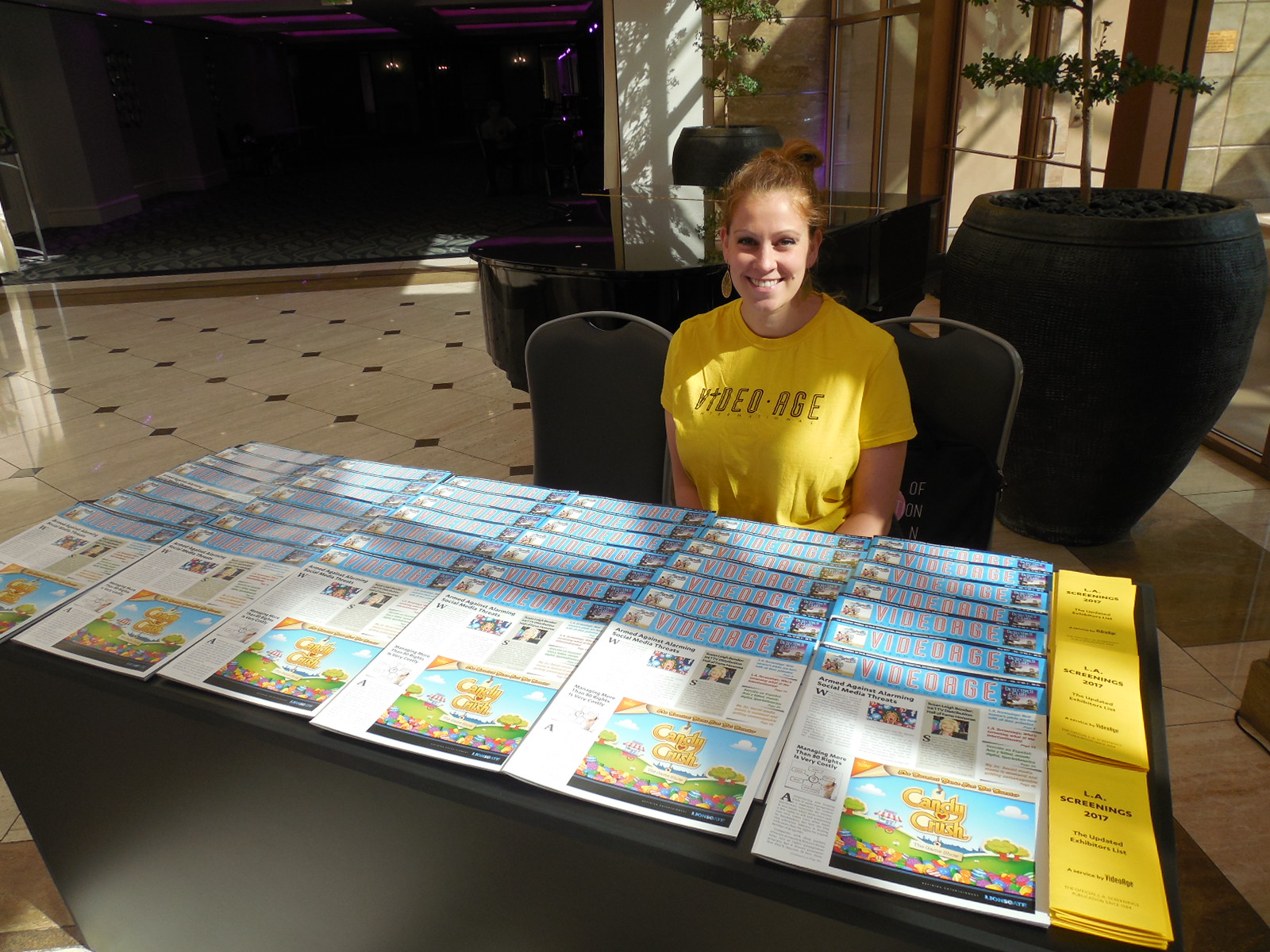Before the start of the L.A. Screenings 2017, it was begining to feel like like deja vu from the L.A. Screenings 2008, which was affected by the writers’ strike that began in November 2007, and only saw a few pilots completed. Fortunately, this time, the disputes with the writers’ two unions were resolved a month before the Upfront presentations in New York City, with a three-year contract for non-linear broadcasting being signed.
This time, though, it came down to the wire, with the writers’ unions calling off the planned strike for pension and SVoD residuals, just a few days before the Upfronts.
With the new dispute resolved, the first L.A. Screenings market day for the Indies on May 16 went underway with busy schedules, intensive suite meetings, a general screenings (Sonar) and NATPE’s opening party. The following days were just as busy with a MIP Cancun reception, Caracol party and Telefilms general screenings.
At the InterContinental Hotel, which, as usual, was the venue for the Indie portion of the L.A. Screenings and it is located in the Century City area of Los Angeles, Latin and other buyers found 80 exhibitors from 16 countries, with seven first timers, including All 3Media and Sonar. Last year saw 88 distribution companies. However, the overall number of buyers throughout the whole two-week event remained steady with most studios averaging around 2,000 buyers from 56 countries.
For the first time this year, Isabella Marquez, who traditionally coordinates the indies at the InterContinental Hotel, introduced the badge concept for participants. She reported that as per May 11, 910 people had registered in advance to get the badge, and 300 more did it by the market’s opening day. Marquez also arranged for free Wi-Fi service throughout the Hotel for L.A. Screenings participants.
The badge concept was well received and some participants, such as ACI’s Chevonne O’Shaughnessy, who operated from the busy lobby without renting a suite, were even willing to pay a fee to get a badge, “since we are taking advantage of the services,” she commented.
In the first day of the Indie portion of the L.A. Screenings at the InterContinental Hotel, which gathers mainly LATAM buyers, Jeff Crounck, the hotel’s Bell Captain, delivered 261 copies of VideoAge to the buyers’ rooms. According to him, VideoAge was the only publication that provided this service.
As anticipated in VideoAge’s April Issue, the U.S. President Trump’s ideology is seeping into the new TV season. Wrote The New York Times about the new season series: “How would the occupant of the White House affect what showed up on the air? One trend that has emerged is the rise 0f shows with military themes.”
The Los Angeles Times reported that the new TV lineup is “playing it safe. Network television wants to be America’s security blanket.” The paper also added, “viewers want some escapism from the unpredictable administration of President Tromp that has generated alarming headlines about campaign collusion with Russia and a possible nuclear showdown with North Korea.”
However, other commentators pointed out that, while networks are playing it safe, complete with many remakes of classic shows like Dynasty, Will & Grace and Roseanne, audiences reward those TV outlets that that take chances and are challenging.
As far as the Upfronts were concerned, advertisers returned to traditional television, having reportedly been disappointed by the ROI with digital.
The Upfront accounts for between 75 and 80 percent of the overall TV primetime ad market, and if the economy improves, the nets can increase the rates for the balance of the airtime inventory in the so-called scatter market. For example, according to Standard Media Index estimates, advertisers that bought spots in CBS’ The Big Bang Theory in the scatter market paid over $391,000 per spot, a 34 percent premium over the network’s Upfront rate last year.
At the Upfronts, the major networks picked a total 46 series for the new season, mid-season and back-ups out of 75 pilots presented, however the studios will be distributing a total of 69 new series, which includes programs produced for other TV outlets. Seven of the new series were picked up before the Upfronts and others, like FOX’s 911 and CBS’ Dynasty were not screened in L.A. since they went straight to series.
As for the TV broadcast networks’ genre mix, the dramas won out over the comedies, with 26 dramas and 13 laffers.


Leave A Comment